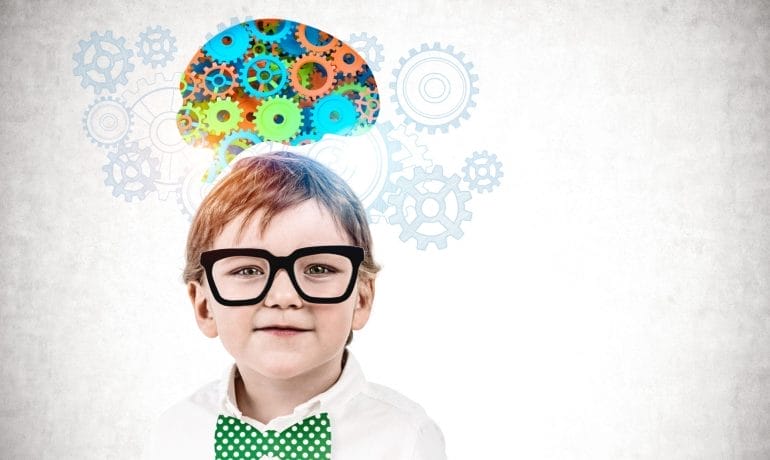While you might think that navigating the intricacies of the pediatric brain is a daunting task best left to neurologists, it’s crucial for all healthcare providers to have a fundamental understanding.
‘Navigating the Pediatric Brain: A Guide to Neurological Care’ is an essential tool that bridges the gap between complex neurological conditions and practical patient care.
It’s not about turning you into a full-fledged neurologist overnight, rather, it’s about equipping you with knowledge and skills to make informed decisions when caring for children with neurological conditions.
Intrigued? Let’s explore further how this guide can be your compass in the challenging landscape of pediatric neurology.
Understanding Pediatric Brain Development
Diving into the realm of pediatric brain development, it’s essential to grasp that the brain’s rapid growth and development predominantly occurs within the first five years of life. This period is foundational, shaping the brain’s architecture and paving the way for future cognitive, emotional, and social abilities.
You’ll find that the brain’s distinct plasticity during these early years allows infants and children to adapt readily to experiences, learn new skills, and form significant synapses, the vital connections between brain cells. These experiences and environmental factors play a pivotal role in pediatric neurology, impacting the trajectory of brain development.
Alongside these influences, genetics also exert a considerable effect, governing aspects like language acquisition, memory, and learning abilities. Understanding pediatric brain development isn’t merely academic; it’s crucial for providing appropriate interventions and support. By recognizing the critical periods of brain development, you can ensure optimal cognitive and neurological health for the child in your care.
In the realm of pediatric brain development, every experience, every interaction, matters. So, when you’re nurturing these young minds, remember, you’re not just caring for a child, you’re shaping the future.
Common Neurological Disorders in Children
While understanding pediatric brain development is key in providing children with optimal cognitive and neurological health, it’s equally important to be aware of the common neurological disorders they might encounter. These disorders can significantly affect a child’s neurological function and developmental progress.
As you navigate through the pediatric brain, you’ll come across:
- Traumatic Brain Injury: usually caused by a blow or other traumatic injury to the head or body. The degree of damage can depend on several factors, including the nature of the injury and the force of impact.
- Epilepsy: a condition that affects the central nervous system. It’s characterized by unpredictable seizures varying in severity.
- Cerebral Palsy: affecting muscle tone, movement, and motor skills. It’s usually caused by brain damage that happens before or during a child’s birth, or during the first 3 to 5 years of a child’s life.
- Developmental Delays: not reaching these so-called ‘milestones’ can signal potential problems, including possible neurological disorders.
Children diagnosed with these conditions often require critical care in pediatric intensive care units. Understanding these disorders can help you serve in the best interests of the children in your care, supporting their neurological health with compassion and knowledge.
Diagnostic Procedures for Pediatric Neurology
In the realm of pediatric neurology, using validated symptom scales can significantly boost the accuracy of your diagnosis. Your care for your young patients should be underpinned by a strong foundation of information and knowledge about the unique challenges that come with pediatric brain assessment.
Age-appropriate assessment tools aid in the accurate evaluation of brain function in critically ill children. These tools are especially crucial when working in high-pressure environments such as the Pediatric Intensive Care Unit (PICU). The information acquired through these assessments can guide your decisions, enhancing the care you provide.
Advancements in technology have led to the development of innovative diagnostic techniques. For instance, Electroencephalography (EEG) and Magnetic Resonance Imaging (MRI) are frequently used to delve deeper into the intricacies of the pediatric brain. Genetic testing can also provide valuable insights into potential neurological issues.
However, remember that comprehensive care extends beyond diagnosis. Collaborating with a multidisciplinary team of specialists, such as pediatric neurologists, neurosurgeons, and rehabilitation therapists can create a holistic care plan that caters to all aspects of your patient’s health.
Navigating Pediatric Neurological Treatments
Navigating the complex maze of pediatric neurological treatments, you’ll find the CDC Pediatric mTBI guideline a critical compass, offering 19 clinical recommendations that cover diagnosis, prognosis, and management. These recommendations, thoroughly researched and meticulously crafted, aim to serve as the standard of care.
As a member of the care team, you’ll encounter various risk factors in patients. These include:
- Premature birth
- Complex heart disease
- Neurologic disorders
- The number 26, representing potential side effects of treatment
Understanding these risk factors, you’ll be better equipped to customize treatments and manage potential side effects.
The guideline also offers you a range of practical tools:
- Checklists for organized procedures
- Online training for continuous learning
- Patient and family resources for a holistic approach
- Connections through the CDC HEADS UP website for peer support
Practical Tips for Pediatric Neurological Care
To optimize the care of pediatric patients with neurological conditions, you’ll find these practical tips invaluable in your approach to diagnosis, prognosis, and management.
When dealing with pediatric concussions, employ validated symptom scales for accurate diagnosis. Assess evidence-based risk factors for prolonged recovery and offer customized instructions for activity resumption. Encourage patients to gradually resume non-sports activities post-rest.
As a health care provider, utilize tools like checklists and at-a-glance resources. Schools of Medicine, particularly in New York, offer online training for healthcare providers, which can be beneficial in diagnosis and management of pediatric mTBI.
Understanding brain death in children is a unique challenge. Use standardized clinical assessment tools for age-appropriate evaluation of brain function. This is crucial in pediatric critical care.
Engaging family members is essential for effective care. Provide them with discharge instructions, symptom-based recovery tips, and access to resources like the CDC HEADS UP website. This empowers them with knowledge and makes them active participants in the child’s recovery. Remember, a well-informed and involved family can significantly improve outcomes in pediatric neurological care.
Frequently Asked Questions
What Are the 4 Categories of Mtbi?
You’re asking about the four categories of MTBI. They’re physical symptoms, cognitive impacts, emotional changes, and sleep disturbances. It’s crucial to understand these for effective treatment, recovery, and to prevent further psychological impacts.
Which States Do Not Recognize Brain Death?
You’d need to research each state’s laws as they vary. Legal implications, ethical controversies, religious perspectives, medical challenges, and public awareness all contribute to this complex issue. It’s not a straight forward answer.
Why Is the Pediatric Brain More Susceptible to Mtbi?
Your child’s brain is more vulnerable to mTBI due to its ongoing development, larger head-to-body ratio, and higher metabolic rate. These factors can affect mTBI symptoms, recovery strategies, and necessitate tailored prevention measures.
What Is the Earliest Indication of Change in a Child’s Neurological Status?
You’ll notice the earliest signs of a shift in your child’s neurological status through behavioral shifts, sleep disruptions, academic struggles, changes in motor skills, and speech delays. Stay alert for these red flags.
Conclusion
As you navigate this complex world of pediatric neurological care, remember – each case is unique. Will you uncover the diagnosis through cranial imaging or perhaps a neurodevelopmental follow-up?
The path to treatment is a puzzle. Use this guide, arm yourself with knowledge, and take each step with precision. And remember, the most crucial piece of this puzzle? Communication. Keep families informed, involved.
It’s a journey – one you’re well equipped to navigate.



















